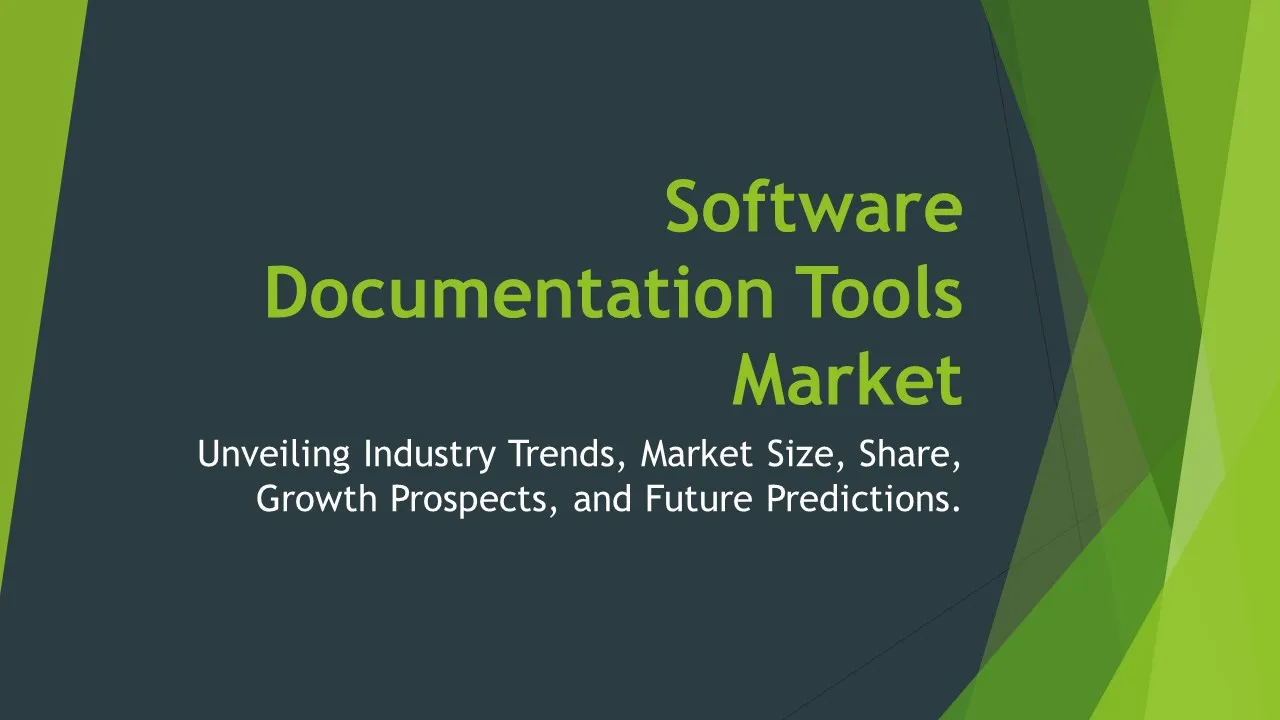Identity Access Management IAM Software
Identity Access Management IAM Software Market Segments - by Product Type (Single Sign-On (SSO), Multi-Factor Authentication (MFA), Identity Governance and Administration (IGA), Privileged Access Management (PAM), User Provisioning), Application (Banking, Financial Services, and Insurance (BFSI), IT and Telecommunications, Healthcare, Retail, Government and Public Sector), Distribution Channel (Direct Sales, Indirect Sales), Ingredient Type (Cloud-Based, On-Premises), and Region (North America, Europe, Asia Pacific, Latin America, Middle East & Africa) - Global Industry Analysis, Growth, Share, Size, Trends, and Forecast 2025-2035
- Report Preview
- Table Of Content
- Segments
- Methodology
Identity Access Management IAM Software Market Outlook
The global Identity Access Management (IAM) software market is anticipated to reach approximately USD 24 billion by 2035, growing at a CAGR of around 12% during the forecast period from 2025 to 2035. This substantial growth is largely driven by the increasing need for enhanced security measures to combat rising cyber threats, coupled with the growing adoption of cloud-based solutions across various industries. Organizations are increasingly recognizing the critical importance of safeguarding sensitive data, allowing IAM solutions to become integral to their security infrastructure. The proliferation of mobile devices and remote working arrangements has further accelerated the demand for IAM systems, reinforcing the necessity for secure access management. Furthermore, regulatory compliance requirements in data protection are compelling businesses to invest in robust IAM solutions.
Growth Factor of the Market
The growth of the Identity Access Management (IAM) software market can be attributed to several interrelated factors that foster a conducive environment for its expansion. Firstly, the increasing frequency and sophistication of cyberattacks have heightened the awareness of the need for strong identity and access management solutions among organizations. As data breaches become more common, businesses are compelled to implement IAM systems to protect sensitive information and maintain customer trust. Secondly, the rapid digital transformation across various sectors is driving the demand for IAM solutions. As organizations migrate to digital platforms and adopt cloud services, there is a pressing need to manage user identities and access privileges efficiently. Additionally, regulatory compliance is another significant growth factor; governments globally are establishing stringent data protection laws that necessitate the implementation of IAM systems to safeguard personal and sensitive data. Moreover, the rise of remote work and the increasing use of mobile devices are contributing to the demand for IAM solutions that can manage user identities across diverse environments. Overall, the confluence of these factors is expected to significantly boost the IAM software market in the coming years.
Key Highlights of the Market
- Projected market size of approximately USD 24 billion by 2035.
- Expected CAGR of around 12% from 2025 to 2035.
- Increased demand for IAM solutions driven by rising cyber threats.
- Regulatory compliance requirements pushing organizations towards IAM adoption.
- Growing need for secure access management in hybrid work environments.
By Product Type
Single Sign-On (SSO):
Single Sign-On (SSO) solutions are gaining significant traction in the IAM software market, facilitating a seamless user experience by allowing users to access multiple applications with just one set of login credentials. This ease of use is particularly appealing in organizations with numerous applications, as it reduces password fatigue and the likelihood of forgotten passwords, which can lead to security risks. SSO also enhances security by minimizing the number of login attempts, thereby reducing potential entry points for cyber threats. Furthermore, SSO systems can be integrated with multi-factor authentication (MFA) for an added layer of security, making it a highly sought-after solution in sectors such as banking, healthcare, and education. As organizations increasingly prioritize user experience alongside security, the demand for SSO solutions is expected to grow significantly in the coming years.
Multi-Factor Authentication (MFA):
Multi-Factor Authentication (MFA) is another crucial component of the IAM software market, designed to enhance security by requiring users to provide two or more verification factors to gain access to applications and systems. This approach significantly strengthens security compared to traditional password-only methods, as it adds additional layers of protection that cybercriminals would need to bypass. MFA can utilize various authentication methods, including SMS verification codes, biometric scans, or email confirmations, making it versatile and adaptable to various security needs. As more organizations recognize the importance of safeguarding sensitive information, the adoption of MFA is expected to rise, particularly in sectors such as finance and government where data protection is paramount. The increasing regulatory mandates for MFA implementation further drive this segment's growth, creating a robust market for MFA solutions.
Identity Governance and Administration (IGA):
Identity Governance and Administration (IGA) solutions are essential for organizations looking to manage user identities and access rights efficiently while ensuring compliance with regulatory requirements. IGA systems provide comprehensive visibility into user activities and access privileges, which is crucial in mitigating risks associated with insider threats and unauthorized access. These solutions facilitate regular audits and access reviews, enabling organizations to enforce access controls based on user roles and responsibilities. The demand for IGA is particularly strong in industries that handle sensitive data, such as healthcare and finance, where compliance with regulations like HIPAA or GDPR is critical. As organizations strive for improved governance and accountability in user access management, the IGA segment of the IAM market is poised for substantial growth in the coming years.
Privileged Access Management (PAM):
Privileged Access Management (PAM) is a specialized area within the IAM software market focused on protecting and managing access to critical systems and sensitive data by privileged users. PAM solutions are designed to monitor, control, and secure privileged accounts, which are often targeted by cyber attackers due to the elevated access they provide. By implementing PAM, organizations can enforce strict access controls, conduct real-time monitoring of privileged user activities, and maintain detailed audit logs for compliance purposes. The growing recognition of the risks associated with privileged access has led to an increase in PAM solution adoption, particularly in sectors like IT, finance, and healthcare. As enterprises continue to face sophisticated cyber threats, the need for robust PAM solutions is expected to drive growth in this segment, underscoring the importance of safeguarding privileged accounts.
User Provisioning:
User provisioning is a fundamental aspect of IAM that involves creating, managing, and deactivating user accounts and access rights across various systems and applications. This process ensures that users have the appropriate access levels based on their roles within an organization, thereby enhancing security and operational efficiency. Automated user provisioning solutions streamline the onboarding and offboarding processes, significantly reducing the administrative burden on IT teams. As organizations adopt more complex IT environments and cloud solutions, the demand for effective user provisioning tools is on the rise. Companies are increasingly recognizing the importance of aligning user access with business needs while maintaining compliance with security policies. Consequently, the user provisioning segment of the IAM market is expected to experience robust growth in the coming years.
By Application
Banking, Financial Services, and Insurance (BFSI):
The Banking, Financial Services, and Insurance (BFSI) sector is one of the primary adopters of IAM software solutions due to stringent regulatory requirements and the critical need to protect sensitive financial data. IAM systems in this industry help organizations manage customer identities, verify user access, and ensure compliance with regulations such as KYC (Know Your Customer) and AML (Anti-Money Laundering). The high stakes associated with data breaches in the BFSI sector have resulted in increased investments in IAM solutions that can facilitate secure transactions and mitigate risks. Additionally, the sector's reliance on digital channels for service delivery further underscores the necessity of robust IAM systems that can manage user identities effectively and securely. As digital banking continues to grow, the demand for IAM solutions in the BFSI sector is expected to remain strong.
IT and Telecommunications:
The IT and telecommunications industry is another significant market for IAM software, driven by the necessity to manage user access across diverse applications and systems. With the rapid expansion of cloud services, remote work, and mobile applications, organizations within this sector require IAM solutions to ensure secure access management. IAM systems offer features such as SSO and MFA, which enhance security for IT services while providing a seamless user experience. Furthermore, regulatory compliance related to data privacy and security is paramount in this sector, making IAM solutions essential for maintaining compliance. As the industry continues to evolve and embrace digital transformation, the demand for IAM solutions is expected to grow, highlighting the critical role they play in securing IT infrastructure.
Healthcare:
The healthcare industry faces unique challenges concerning identity access management due to the sensitive nature of patient data and the stringent regulations governing data protection, like HIPAA. IAM solutions enable healthcare organizations to manage user identities, ensuring that only authorized personnel have access to confidential patient records. This is vital for maintaining patient privacy and meeting compliance obligations. Additionally, IAM systems streamline user provisioning and de-provisioning processes for healthcare staff, enhancing operational efficiency while minimizing security risks. As the healthcare sector continues to adopt digital health solutions and telemedicine, the need for robust IAM systems will intensify, driving growth in this segment of the market.
Retail:
The retail sector has increasingly recognized the importance of IAM solutions, particularly in managing customer identities and securing transactions in an era of digital commerce. With the rise of e-commerce platforms, retailers are required to implement IAM systems to manage customer accounts, protect payment information, and ensure compliance with data protection regulations. IAM solutions provide retailers with the ability to offer personalized experiences while safeguarding sensitive consumer data from unauthorized access. Furthermore, as retailers expand their operations into omnichannel environments, the need for seamless integration of IAM systems becomes critical. Consequently, the retail segment of the IAM market is expected to grow as businesses seek to enhance security while delivering a superior customer experience.
Government and Public Sector:
Government and public sector organizations have a pressing need for effective IAM solutions to manage citizen identities and secure access to sensitive information. IAM systems in this sector help ensure compliance with regulations and policies while maintaining the integrity and confidentiality of government data. These solutions enable government agencies to efficiently manage user access rights, conduct audits, and monitor activities to mitigate the risk of data breaches. Furthermore, the increasing digitalization of government services, such as e-Government initiatives, necessitates robust IAM systems to facilitate secure citizen access to online services. As government agencies continue to embrace digital transformation, the demand for IAM solutions in the public sector is anticipated to grow, emphasizing the importance of safeguarding sensitive information.
By Distribution Channel
Direct Sales:
Direct sales remain a prominent distribution channel for IAM software, allowing vendors to engage with their customers directly and understand their unique security needs. This approach enables IAM providers to offer tailored solutions that align closely with organizational requirements, thus promoting customer satisfaction and loyalty. Direct sales channels often involve dedicated sales teams who can provide in-depth product demonstrations, consultations, and support, enhancing the overall customer experience. Moreover, with the increasing complexity of IAM solutions, organizations often prefer direct interactions to better comprehend the functionalities and integrations offered by IAM vendors. As businesses prioritize personalized engagement and support, the direct sales channel for IAM solutions is expected to continue its significance in the market.
Indirect Sales:
Indirect sales channels, including partnerships with resellers, system integrators, and distributors, play a vital role in the IAM software market by extending the reach of IAM solutions to a broader customer base. These partnerships enable vendors to leverage the existing networks and expertise of their partners, facilitating access to new markets and customer segments. Indirect sales channels are particularly valuable for IAM providers aiming to penetrate industries with specific compliance requirements or regulations. Through alliances with specialized partners, IAM vendors can offer integrated solutions that address particular industry needs, enhancing their competitive advantage. As organizations seek comprehensive security solutions, the role of indirect sales in the IAM market is expected to grow, underscoring the importance of collaboration in achieving market penetration.
By Ingredient Type
Cloud-Based:
Cloud-based IAM solutions are experiencing rapid growth in the identity access management market due to the increasing adoption of cloud technologies across various industries. These solutions offer scalability and flexibility, allowing organizations to manage user identities and access permissions without the need for extensive on-premises infrastructure. The cloud-based model is particularly appealing to small and medium-sized enterprises (SMEs) that may not have the resources to maintain complex IAM systems on-site. Additionally, cloud-based IAM systems enable organizations to access their identity management solutions from anywhere, accommodating the rise of remote work and global operations. As businesses continue to transition to cloud environments, the demand for cloud-based IAM solutions is expected to surge, reflecting the broader shift toward digital transformation.
On-Premises:
On-premises IAM solutions remain integral for organizations that prefer to maintain control over their identity management systems and data security. This model allows organizations to customize IAM solutions according to their specific security policies and compliance requirements. Industries such as finance and healthcare, where data sensitivity and regulatory compliance are paramount, often favor on-premises solutions due to the heightened control over sensitive information. On-premises IAM systems provide organizations with the ability to implement tailored security measures and conduct regular audits more effectively. While the trend is shifting toward cloud-based solutions, the on-premises segment continues to hold significance, especially for organizations with strict data governance policies.
By Region
In terms of regional analysis, the North American IAM software market is projected to dominate due to the presence of a robust IT infrastructure and a high adoption rate of advanced security solutions. The region is expected to account for approximately 40% of the global market share by 2035, supported by a growing emphasis on cybersecurity and regulatory compliance among enterprises. Moreover, significant investments by leading tech companies and advancements in cloud computing significantly contribute to the rapid growth of IAM solutions in North America. In contrast, the Asia Pacific region is anticipated to witness the highest CAGR of about 15% during the forecast period, driven by the rapid expansion of digital technologies, increasing cyber threats, and a rising awareness of the importance of identity and access management among businesses.
Europe is also a key market for IAM solutions, accounting for roughly 25% of the global market share. The region's stringent data protection regulations, such as GDPR, are propelling organizations to adopt IAM solutions to ensure compliance while enhancing security measures. As organizations across various sectors, including finance, healthcare, and government, continue to prioritize data protection and privacy, the demand for IAM systems in Europe is expected to grow steadily. Overall, the regional landscape of the IAM software market highlights significant growth opportunities across different geographies, with North America leading the charge, closely followed by the rapidly developing markets in Asia Pacific and Europe.
Opportunities
The IAM software market is poised for a plethora of opportunities driven by technological advancements and evolving security landscapes. One of the most significant opportunities lies in the integration of Artificial Intelligence (AI) and Machine Learning (ML) into IAM solutions. These technologies can enhance threat detection capabilities, automate user provisioning processes, and improve overall security posture by analyzing patterns and behaviors in user activities. Companies that leverage AI and ML can gain a competitive edge by offering more robust and efficient IAM systems that adapt to evolving threats. Additionally, the increasing shift towards zero-trust security models presents an opportunity for IAM vendors to develop solutions that align with these frameworks, providing organizations with comprehensive access controls and identity verification processes.
Another promising opportunity exists in the small and medium-sized enterprises (SMEs) segment, which is increasingly recognizing the value of IAM solutions to protect their data and comply with regulatory requirements. As cyber threats become more prevalent, SMEs are seeking affordable, scalable, and easy-to-implement IAM solutions to safeguard their operations. Vendors that tailor their offerings to meet the unique needs of SMEs, such as providing cloud-based solutions with user-friendly interfaces and flexible pricing models, stand to capture a significant share of this growing market. Furthermore, partnerships with Managed Security Service Providers (MSSPs) can also unlock opportunities for IAM vendors, enabling them to reach new customers and expand their service offerings.
Threats
Despite the promising growth trajectory, the IAM software market faces several threats that could hinder its progress. One of the primary concerns is the evolving complexity of cyber threats, which continuously adapt and become more sophisticated. As cybercriminals develop advanced strategies to breach security measures, IAM solutions must keep pace with these changes to remain effective. This creates a constant challenge for IAM vendors, who must invest in research and development to ensure their products can withstand emerging threats. Additionally, the rising incidence of data breaches and identity theft can lead to increased scrutiny and regulatory pressures on organizations, complicating the implementation of IAM systems and raising compliance costs.
Another significant threat to the IAM software market is the potential for interoperability issues between different IAM solutions and existing IT infrastructure. As organizations utilize a mix of on-premises and cloud-based applications, ensuring seamless integration can be a complex task. Compatibility challenges may lead to delays in implementation and increased costs for organizations, ultimately deterring them from adopting IAM solutions. Moreover, the fear of vendor lock-in can also dissuade organizations from investing in IAM systems, as they may worry about the limitations and challenges associated with transitioning to alternative solutions in the future. Addressing these concerns and ensuring robust compatibility and flexibility will be crucial for IAM vendors to mitigate these threats effectively.
Competitor Outlook
- IBM Corporation
- Oracle Corporation
- Microsoft Corporation
- SailPoint Technologies
- Okta, Inc.
- Ping Identity Corporation
- CyberArk Software Ltd.
- ForgeRock, Inc.
- RSA Security LLC
- Dell Technologies Inc.
- Auth0, Inc.
- OneLogin, Inc.
- Genetec Inc.
- Idaptive LLC
- Thycotic Software, Inc.
The competitive landscape of the IAM software market is characterized by a diverse array of players, ranging from established technology giants to emerging startups. Key players like IBM, Microsoft, and Oracle dominate the market with their extensive portfolios of IAM solutions, offering comprehensive functionalities that cater to various industries and regulatory requirements. These companies leverage their strong R&D capabilities to innovate continuously, enhancing their products with advanced features such as AI-driven analytics, user behavior monitoring, and seamless integration with other security solutions. Furthermore, strategic partnerships and acquisitions have become a common approach among these major players, allowing them to expand their reach, enhance their service offerings, and gain a competitive edge in the market.
Emerging players, such as Okta and SailPoint, are making significant inroads into the IAM market by focusing on cloud-based solutions and user-centric approaches. These companies capitalize on the growing demand for flexible, scalable IAM systems that cater to the needs of modern enterprises. By prioritizing user experience and ease of integration, these startups are effectively challenging traditional vendors and capturing market share. Additionally, the emergence of niche players focusing on specialized solutions, such as Privileged Access Management and Identity Governance, reflects the growing recognition of the importance of tailored IAM systems to address specific organizational needs. As the market continues to evolve, competition is expected to intensify, with both established and emerging players vying for leadership positions.
1 Appendix
- 1.1 List of Tables
- 1.2 List of Figures
2 Introduction
- 2.1 Market Definition
- 2.2 Scope of the Report
- 2.3 Study Assumptions
- 2.4 Base Currency & Forecast Periods
3 Market Dynamics
- 3.1 Market Growth Factors
- 3.2 Economic & Global Events
- 3.3 Innovation Trends
- 3.4 Supply Chain Analysis
4 Consumer Behavior
- 4.1 Market Trends
- 4.2 Pricing Analysis
- 4.3 Buyer Insights
5 Key Player Profiles
- 5.1 Okta, Inc.
- 5.1.1 Business Overview
- 5.1.2 Products & Services
- 5.1.3 Financials
- 5.1.4 Recent Developments
- 5.1.5 SWOT Analysis
- 5.2 Auth0, Inc.
- 5.2.1 Business Overview
- 5.2.2 Products & Services
- 5.2.3 Financials
- 5.2.4 Recent Developments
- 5.2.5 SWOT Analysis
- 5.3 Genetec Inc.
- 5.3.1 Business Overview
- 5.3.2 Products & Services
- 5.3.3 Financials
- 5.3.4 Recent Developments
- 5.3.5 SWOT Analysis
- 5.4 Idaptive LLC
- 5.4.1 Business Overview
- 5.4.2 Products & Services
- 5.4.3 Financials
- 5.4.4 Recent Developments
- 5.4.5 SWOT Analysis
- 5.5 OneLogin, Inc.
- 5.5.1 Business Overview
- 5.5.2 Products & Services
- 5.5.3 Financials
- 5.5.4 Recent Developments
- 5.5.5 SWOT Analysis
- 5.6 ForgeRock, Inc.
- 5.6.1 Business Overview
- 5.6.2 Products & Services
- 5.6.3 Financials
- 5.6.4 Recent Developments
- 5.6.5 SWOT Analysis
- 5.7 IBM Corporation
- 5.7.1 Business Overview
- 5.7.2 Products & Services
- 5.7.3 Financials
- 5.7.4 Recent Developments
- 5.7.5 SWOT Analysis
- 5.8 RSA Security LLC
- 5.8.1 Business Overview
- 5.8.2 Products & Services
- 5.8.3 Financials
- 5.8.4 Recent Developments
- 5.8.5 SWOT Analysis
- 5.9 Oracle Corporation
- 5.9.1 Business Overview
- 5.9.2 Products & Services
- 5.9.3 Financials
- 5.9.4 Recent Developments
- 5.9.5 SWOT Analysis
- 5.10 Microsoft Corporation
- 5.10.1 Business Overview
- 5.10.2 Products & Services
- 5.10.3 Financials
- 5.10.4 Recent Developments
- 5.10.5 SWOT Analysis
- 5.11 CyberArk Software Ltd.
- 5.11.1 Business Overview
- 5.11.2 Products & Services
- 5.11.3 Financials
- 5.11.4 Recent Developments
- 5.11.5 SWOT Analysis
- 5.12 Dell Technologies Inc.
- 5.12.1 Business Overview
- 5.12.2 Products & Services
- 5.12.3 Financials
- 5.12.4 Recent Developments
- 5.12.5 SWOT Analysis
- 5.13 SailPoint Technologies
- 5.13.1 Business Overview
- 5.13.2 Products & Services
- 5.13.3 Financials
- 5.13.4 Recent Developments
- 5.13.5 SWOT Analysis
- 5.14 Thycotic Software, Inc.
- 5.14.1 Business Overview
- 5.14.2 Products & Services
- 5.14.3 Financials
- 5.14.4 Recent Developments
- 5.14.5 SWOT Analysis
- 5.15 Ping Identity Corporation
- 5.15.1 Business Overview
- 5.15.2 Products & Services
- 5.15.3 Financials
- 5.15.4 Recent Developments
- 5.15.5 SWOT Analysis
- 5.1 Okta, Inc.
6 Market Segmentation
- 6.1 Identity Access Management IAM Software Market, By Application
- 6.1.1 Banking
- 6.1.2 Financial Services
- 6.1.3 Insurance (BFSI)
- 6.1.4 IT and Telecommunications
- 6.1.5 Healthcare
- 6.1.6 Retail
- 6.1.7 Government and Public Sector
- 6.2 Identity Access Management IAM Software Market, By Product Type
- 6.2.1 Single Sign-On (SSO)
- 6.2.2 Multi-Factor Authentication (MFA)
- 6.2.3 Identity Governance and Administration (IGA)
- 6.2.4 Privileged Access Management (PAM)
- 6.2.5 User Provisioning
- 6.3 Identity Access Management IAM Software Market, By Ingredient Type
- 6.3.1 Cloud-Based
- 6.3.2 On-Premises
- 6.4 Identity Access Management IAM Software Market, By Distribution Channel
- 6.4.1 Direct Sales
- 6.4.2 Indirect Sales
- 6.1 Identity Access Management IAM Software Market, By Application
7 Competitive Analysis
- 7.1 Key Player Comparison
- 7.2 Market Share Analysis
- 7.3 Investment Trends
- 7.4 SWOT Analysis
8 Research Methodology
- 8.1 Analysis Design
- 8.2 Research Phases
- 8.3 Study Timeline
9 Future Market Outlook
- 9.1 Growth Forecast
- 9.2 Market Evolution
10 Geographical Overview
- 10.1 Europe - Market Analysis
- 10.1.1 By Country
- 10.1.1.1 UK
- 10.1.1.2 France
- 10.1.1.3 Germany
- 10.1.1.4 Spain
- 10.1.1.5 Italy
- 10.1.1 By Country
- 10.2 Asia Pacific - Market Analysis
- 10.2.1 By Country
- 10.2.1.1 India
- 10.2.1.2 China
- 10.2.1.3 Japan
- 10.2.1.4 South Korea
- 10.2.1 By Country
- 10.3 Latin America - Market Analysis
- 10.3.1 By Country
- 10.3.1.1 Brazil
- 10.3.1.2 Argentina
- 10.3.1.3 Mexico
- 10.3.1 By Country
- 10.4 North America - Market Analysis
- 10.4.1 By Country
- 10.4.1.1 USA
- 10.4.1.2 Canada
- 10.4.1 By Country
- 10.5 Middle East & Africa - Market Analysis
- 10.5.1 By Country
- 10.5.1.1 Middle East
- 10.5.1.2 Africa
- 10.5.1 By Country
- 10.6 Identity Access Management IAM Software Market by Region
- 10.1 Europe - Market Analysis
11 Global Economic Factors
- 11.1 Inflation Impact
- 11.2 Trade Policies
12 Technology & Innovation
- 12.1 Emerging Technologies
- 12.2 AI & Digital Trends
- 12.3 Patent Research
13 Investment & Market Growth
- 13.1 Funding Trends
- 13.2 Future Market Projections
14 Market Overview & Key Insights
- 14.1 Executive Summary
- 14.2 Key Trends
- 14.3 Market Challenges
- 14.4 Regulatory Landscape
Segments Analyzed in the Report
The global Identity Access Management IAM Software market is categorized based on
By Product Type
- Single Sign-On (SSO)
- Multi-Factor Authentication (MFA)
- Identity Governance and Administration (IGA)
- Privileged Access Management (PAM)
- User Provisioning
By Application
- Banking
- Financial Services
- Insurance (BFSI)
- IT and Telecommunications
- Healthcare
- Retail
- Government and Public Sector
By Distribution Channel
- Direct Sales
- Indirect Sales
By Ingredient Type
- Cloud-Based
- On-Premises
By Region
- North America
- Europe
- Asia Pacific
- Latin America
- Middle East & Africa
Key Players
- IBM Corporation
- Oracle Corporation
- Microsoft Corporation
- SailPoint Technologies
- Okta, Inc.
- Ping Identity Corporation
- CyberArk Software Ltd.
- ForgeRock, Inc.
- RSA Security LLC
- Dell Technologies Inc.
- Auth0, Inc.
- OneLogin, Inc.
- Genetec Inc.
- Idaptive LLC
- Thycotic Software, Inc.
- Publish Date : Jan 21 ,2025
- Report ID : IT-69566
- No. Of Pages : 100
- Format : |
- Ratings : 4.5 (110 Reviews)









